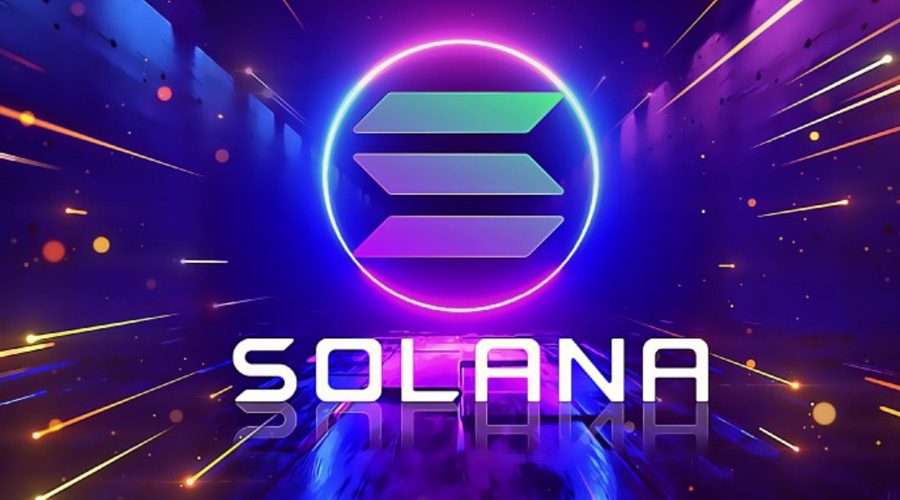Quick refresher – oversimplified descriptions
What is a consensus mechanism? It’s simply the method that blockchains use, to confirm transactions are accurate. Different blockchains have chosen different methods.
What are the most common consensus mechanism methods?
- Proof Of Work PoW (used by Bitcoin), and
- Proof Of Stake PoS (Used by Ethereum from September 2022 onwards).
Why do millions of people believe web3 is worsening climate change? Why are Chinese crypto miners still mining crypto illegally, despite government bans? How are major blockchains scaling while keeping security?
You might be surprised that all these questions are answered by which consensus mechanism a blockchain chooses to use.
PoW (Bitcoin) uses a calculation that requires energy. As you may have noticed in the news – Bitcoin uses a huge amount of electricity.
As you start learning about cryptocurrency, you’ll come across terminologies like Proof-of-Work (PoW), Proof-of-Stake (PoS), and Proof-of-History (PoH). In this guide, we will give you a simplified overview to understand the pros & cons of each approach.
For new investors, these may appear to be complicated. These consensus mechanism are critically important. Why? because they allow crypto to remain decentralized (by verifying blockchain transactions without the use of a third party).
Consensus Mechanism

Consensus mechanisms or consensus algorithms are the methods through which nodes in a network agree on which blockchain transactions are legitimate.
Understand that a blockchain is essentially a distributed digital ledger of information that everyone in the network has access to. This means that every node has the same view of the blockchain’s current state and previous transactions. Network nodes must agree on which new blocks are genuine and should be added to the chain to update this ledger and keep it universally identical.
To reach consensus, a network’s nodes must agree that a block is valid and should be added by at least 51% of them.
This is a basic overview of consensus methods and how they’re utilized in cryptocurrencies. Various cryptocurrencies, on the other hand, have different consensus algorithms, which have significant consequences for energy consumption, security, and scalability.
What Is Proof of Work?

Proof-of-Work is the consensus method used by Bitcoin and Ethereum, and it’s likely what most new cryptocurrency investors are familiar with. It’s also the process at work when people discuss Ethereum and Bitcoin mining.
How PoW Works
Blocks with transactions must be confirmed by network members before being added to the chain in Proof-of-Work. Validators employ computer power to solve complex cryptographic puzzles to verify blocks. When a participant validates a block correctly, that block is added to the chain, and the person is rewarded with Bitcoin.
Mining is the process of using processing power to solve complex problems in exchange for block rewards. Mining rewards for completing a block in Bitcoin are halved every four years or so as the overall number of circulating BTC grows. Miners currently receive 6.25 BTC for validating a block.
Proof-of-Work consumes a lot of energy. The hash rate, or the amount of processing power used to mine cryptocurrencies like Bitcoin, is enormous. As a result, more energy is expended all over the world. It has also had an impact on the worldwide GPU industry, as miners purchase more expensive computer hardware to mine more efficiently.
One disadvantage of Proof-of-Work is its high energy usage. Additionally, PoW adheres to the “longest chain” rule, in which users recognize the longest chain in a blockchain as genuine. This means PoW Cryptocurrencies are more vulnerable to 51% attacks, which occur when a single entity reaches 51% of the overall hash rate, builds the longest chain with fraudulent blocks, and double-spends their cryptocurrency.
PoW has been criticized for its inability to scale. Bitcoin miners, for example, validate blocks every ten minutes on average, whereas PoS and PoH validate transactions considerably more quickly. When you consider things like ETH gas fees, it’s easy to see why Bitcoin and Ethereum aren’t suitable for making a lot of daily transactions.
Pros and Cons Of Proof of Work
Pros
- Rewards Miners: PoW allows miners to earn incentives for validating blockchain transactions, providing an incentive for users to assist in the validation of blocks and the smooth operation of the system.
- Security: On established cryptocurrencies with a large number of varied hash rates, the odds for a 51% attack are unlikely.
Cons
- Energy Consumption: The environmental impact of cryptocurrency mining is frequently criticized. Bitcoin mining consumes more electrical energy than several countries!
- Verification Times: For Bitcoin, validating blocks with Proof of work takes minutes. As a result, cryptocurrencies like Bitcoin are more helpful as a store of wealth than for completing multiple, quick transactions.
- Barriers To Entry: Global mining operations now control a large portion of the hash rate for cryptocurrencies such as Bitcoin and Ethereum. Starting as an independent miner is costly, both in terms of hardware and electricity.
What Is Proof of Stake PoS?

Proof-of-Stake is a consensus process used by cryptocurrencies such as Algorand, Cardano, Solana, and Tezos to verify transactions. It’s a common Proof-of-Work alternative.
To boost scalability and security, Ethereum is transitioning from PoW to PoS in its Ethereum 2.0 update.
How Proof of Stake PoS Works
Stakers are similar to cryptocurrency miners in Proof-of-Stake, however, they lock up cryptocurrency they own to function as validator nodes. The amount of cryptocurrency you stake determines your chances of validating a new block and earning block rewards. This means that the more cryptocurrency you own and stake, the more likely it is that you will be chosen to validate a block.
Proof-of-Stake differs from Proof-of-Work since it does not require nearly as much energy to validate blocks. This is because staking utilizes smart contracts to lock cash and does not need to use mining to solve energy-intensive cryptographic problems.
Because PoS allows for more transactions per second (TPS) than PoW, it is also more scalable. While a single Bitcoin transaction takes roughly 10 minutes to validate, Cardano has a TPS of around 257. And Ethereum’s founder, Vitalik Buterin, expects that the ETH 2.0 update will allow for up to 100,000 TPS for ETH.
Finally, you may conclude that PoS is a more equitable consensus method because it pays all stakeholders equally. With PoW, huge entities control a large share of hash rates, and mining is expensive. However, using PoS, even novice investors can earn rewards by staking their bitcoin on their own or through staking pools.
Pros and Cons of Proof of Stake
Pros
- Efficiency: PoS doesn’t affect climate change (like PoW), because it doesn’t use large amounts of energy. Because validators do not need to solve complex cryptographic problems using computational resources, PoS is more energy-efficient than PoW.
- Security: To participate in staking, you must be a stakeholder, and this form of self-governance enhances security naturally.
- Scalability: Because a PoS network obtains consensus before adding blocks, it may process substantially more transactions per second than a PoW network.
Cons
- Validators with a lot of money can have a better advantage over transaction verification.
- Some PoS cryptocurrencies require staked coins to be locked up for a set period.
- PoS is still relatively new, and its security is not as well established as PoW.
- The payoff for staking isn’t as good as the one for mining.
What Is Proof of History?

Proof of History is a consensus mechanism used alongside PoS by Solana, one of the largest cryptocurrencies by market cap, to help solve the issue of universal blockchain time and increase network speed.
Solana has the advantage of being incredibly efficient. Due to the use of PoH and other advances, it can process transactions significantly faster than cryptocurrencies like Bitcoin and Ethereum.
How PoH Works
PoH intends to construct a ledger with a verified clock so network nodes know the recorded passage of time without having to depend on other nodes, according to Solana’s whitepaper.
In summary, nodes with PoH have their internal clock that checks events and time. The proof hashes incoming events and also specifies when they happened using a verifiable delay function (VDF). Other nodes may immediately tell the order in which events occurred by looking at the sequence of hashes, without needing to confirm the time with other nodes.
Solana has several other technological advancements that boost efficiency. For example, it employs the Turbine protocol, which compresses data into smaller pieces to reduce bandwidth usage and boost TPS. “Sealevel” is also used, which allows smart contracts to run in parallel.
Solana claims it will be able to achieve over 60,000 TPS as a result of all of these advancements. Solana is nicknamed the “Ethereum killer” by its supporters because of its lightning-fast transaction rates and incredibly low costs.
Pros and Cons of Proof of History

Pros
- Scalability: The number of transactions per second increases the scalability of a cryptocurrency.
- Low Costs: Solana has much cheaper fees than Ethereum and other cryptocurrencies. This makes it more practical for frequent spending and money transfers.
Cons
- Lesser Decentralized Apps: Solana is known as an Ethereum killer, with over 350 dApps launched on the platform, according to its website. On the other hand, Ethereum has approximately 3,000 dApps, and it is here where more development time and innovation in DeFi are now taking place.
- Concerns about Centralization: Solana currently has less than 1,200 validators on its network to validate transactions.
- Relatively Untested: While most blockchains are new tech, Solana has even less “battle-tested-time” where the chain is being used. This is evident in the chain being halted multiple times since lanch due to various technical issues. Looking forward, Solana have a talented team of devs that have reduced the frequency of chain halts. But PoH is objectively less mature than the other two mechanisms (PoW and PoS).
What Does Proof of Work and Proof of Stake Mean for Traders and Investors?

Proof-of-Work, Proof-of-Stake, and Proof-of-History may appear to be gibberish at first. However, it’s critical to understand what you’re investing in and why it can be valuable in the first place with any asset class. In the case of cryptocurrencies, this entails comprehending the underlying technology that underpins various initiatives.
Other than buying cryptocurrencies on an exchange, developments like PoS and PoH open up additional possibilities. You can earn passive benefits with your bitcoin by staking, for example. You might also look at lending platforms such as BlockFi and Celsius, which allow you to deposit your cryptocurrency and receive interest.
Proof-of-Work and Bitcoin, in the end, established the foundation for cryptocurrency consensus mechanisms. However, the market is fast evolving, and investors should assess the long-term viability of any cryptocurrency validation technology before deciding to invest.



